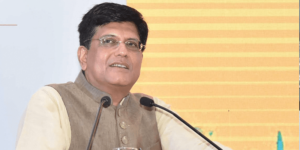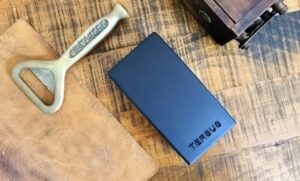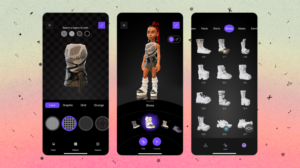Gaurav Srivastava is no stranger to the Indian startup ecosystem. He is the CTO of logistics SaaS company FarEye, which recently raised $100 million in Series E round from TCV and Dragoneer Investment Group among others.
Starting as the co-founder of a bootstrapped GPS tracker manufacturing startup in 2009 to designing a low-code, intelligent delivery management platform with FarEye in 2013, Gaurav has come a long way in the last 12 years.
He was not only responsible for building FarEye’s first tech product, but also setting up the tech team and build a strategy with only 10 people. Today, FarEye’s tech team stands at over 450, and boasts three clearly articulated products.
At present, the startup is on a journey to achieve 100+ million transactions per day, with over 150 customers in more than 30 countries. It has offices in New Delhi, Dubai, Singapore, London and Chicago.
Currently based out of Chicago, Gaurav is looking after the expansion of FarEye in the region and building a team to serve its clients locally.
“No one thought that a boy from a small city like Dhanbad could run a startup and become a CTO. But when you are young, you need people to motivate you and to support you. You don’t need big wisdom, just some simple directions. I was lucky enough to have my brother and teacher who really helped me figure out my purpose in my life at a very young age,” he adds.
Gaurav with his family during childhood days
The Bill Gates of his class
Gaurav was known as the most notorious kid on the block, but with his father being a professor in IIT Dhanbad, and mother working at the CSIR laboratory, academics was top priority. At the same time, the siblings were always encouraged to explore new things.
When he got his own computer at home, his interest in gaming preceded programming.
Gaurav reminisces that back in the days, computers did not feature as part of school syllabus, and access to internet was limited. It was only after his brother convinced the teachers that they got it as a subject in the school. He credits one of his teachers, Subhashish, for pushing him to produce a quarterly computer magazine and organise exhibitions. This got Gaurav learning more about computers, and languages such as LOGO, and BASIC.
Gaurav and his computer prowess was so popular that his classmates nicknamed him ‘Vidhayak (Bill)’ ‘Darwaza (Gate)’.
“I hated it that time, but now when I look back, I really love it,“ he chuckles.
Gaurav and his brother
First tryst with coding
Gaurav remembers exploring the C programming language when he was in class 7. It coincided with his father showing him an e-greeting card designed with 3D and graphics.
This really caught his attention, and since C had good graphic utility, he started exploring. Gaurav found a ping pong coding program, copied it, added his own elements to it with some animated graphics to build a Tetris game.
“That was my first program which caught everybody’s attention. Later, in class 11, I also created an accounting software licensed it to a few guys,” he adds.
The first turning point
Gaurav began his engineering in Computer Science at the Kalinga Institute Of Technology in Bhubaneswar in 2005. In college, Gaurav was exposed to Java.
During his second year, he worked on building his application development skills, gradually learning and integrating concepts like HTML, PHP, CSS, JavaScript, SQL and more into robotic engineering, image processing etc.
“I was among the few guys in college who could code. So I did a lot of application development, managed the college website, student databases, etc,” he says.
Gaurav and FarEye’s co-founders, Kushal Nahata and Gautam Kumar go back a long way, having been in the same college.
“We were the leaders managing college tech fests. In my third year, we were the national champions of image processing at IIT Kharagpur. Today we have Python, but in 2008 we used MATLAB and C-Sharp to get image processing done. That was a pretty core level of coding,” he shares.
In 2007, Gaurav started freelancing, charging about $100 per website. A year later, he started a three-month internship at one of his senior’s startup in Bhubaneswar.
“Lalit Patel was the first student from our college who had his own mobile gaming startup. He was popular, had his own bootstrapped business, which earned good revenue, and he later sold his company for a decent value. During my internship with him, I learnt about making money using software development skills,” says Gaurav.
While the pay was minimal, his experience covered several aspects of software development right from application development to keeping users motivated.
“After that internship, I was sure about travelling the entrepreneurial route. We began our startup in the fourth year of college, with no set business plan. Also, 2009 was the recession year. But I was pretty sure that we’ll be able to figure out a way to survive. There was risk, but we saw an upside to it, and that’s how we went into this startup,” says Gaurav.
FarEye founders (L-R) Gaurav Srivastava, Gautam Kumar and Kushal Nahata
The pivot from manufacturing to software
At first, Gaurav, Kushal and Gautam started by manufacturing GPS tracking devices. This was in 2009. The devices were sold to big fleet owners to help them track their vehicles. The trio bootstrapped until 2013.
“With the growth of ecommerce, we realised that there is an emergence of another kind of fleet, including bikes and autos. While selling GPS tracking devices alone was not feasible from both scale and cost perspective, Gaurav realised that its mobile app made more sense.
In 2013, the friends turned business partners pivoted their business model to just providing Software as a service (SaaS).
Lessons learnt
Gaurav shares three very important lessons he learnt as an entrepreneur and techie, and they are –
Have empathy – “It was 2010, and I had just started my company. I was young and aggressive. There were several incidences that made me realise that one needs to become more empathetic and be open to feedback. I also learnt that it’s ok to fail.”
Customer satisfaction is the key – “We were working on a government project, by far the largest we had at the time in 2012. During the project, we shifted our base from Bhubaneswar to New Delhi. When it was project delivery time, I understood that it is not enough to just write down five things on paper and hand them to the end customer. You need to elevate your promises and execute things point to point,”
One cannot be a sole warrior – “Until we got the DHL project, I was a sole warrior. But when we were pitted against the league players for a project where you had to do installations for 20 different worldwide locations, as an individual, there’s only so much you can do. We were 20 people that the time at FarEye and this experience taught me the importance of a team.”
As Gaurav looks back, he says he began his journey as a techie when books were the only source of information. Today’s generation has access to unbound learning resources due to the internet, but just copying a code of the internet will not make anyone master a language or a technology.
“There is a fine line between building a product and a solution. While you can optimise the product, finding a solution requires building an ecosystem. As a techie, you need to have your basics right, execute things well in the simplest manner possible and be ready to adapt to changes. Also, having long sightedness is certainly a blessing,” Gaurav concludes.

![You are currently viewing [Techie Tuesday] Meet Gaurav Srivastava, a small-town boy from Dhanbad who is now building a global SaaS company](https://blog.digitalsevaa.com/wp-content/uploads/2021/06/TechieTuesday30-1623077105570.png)








